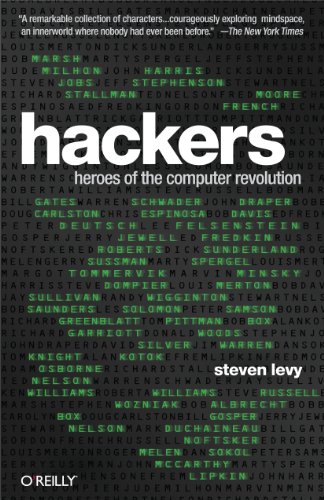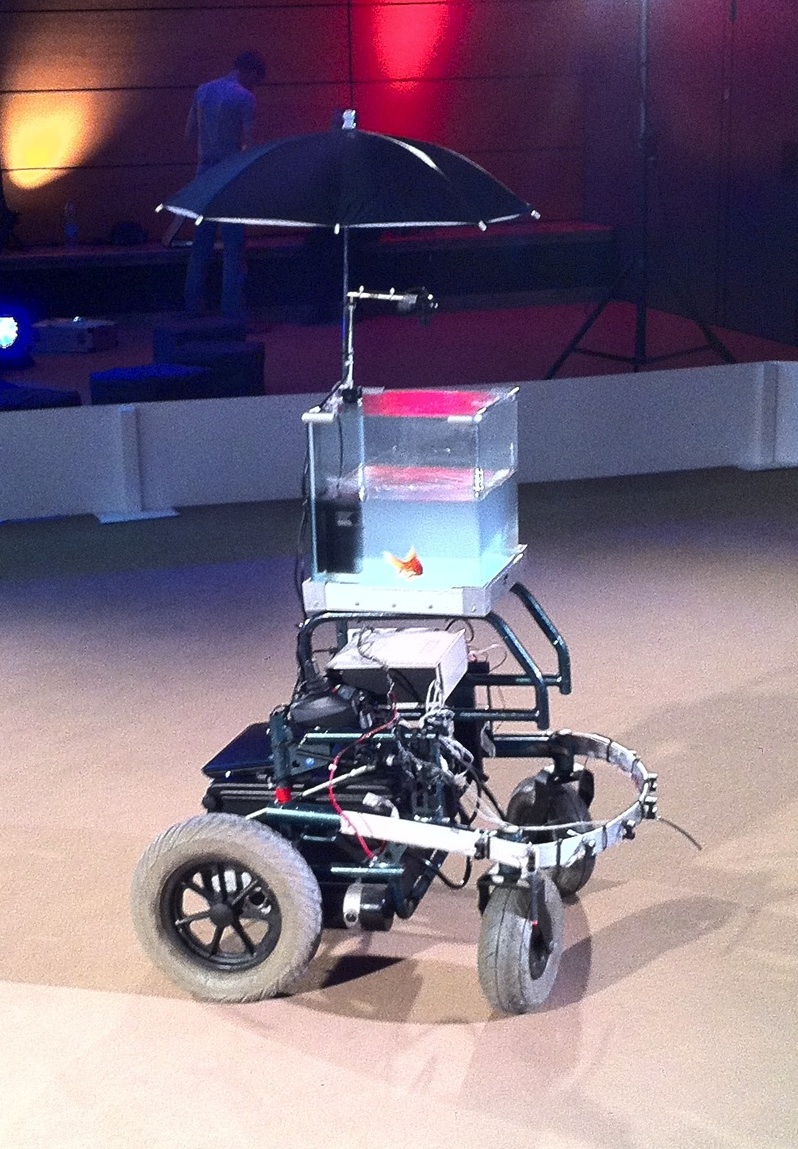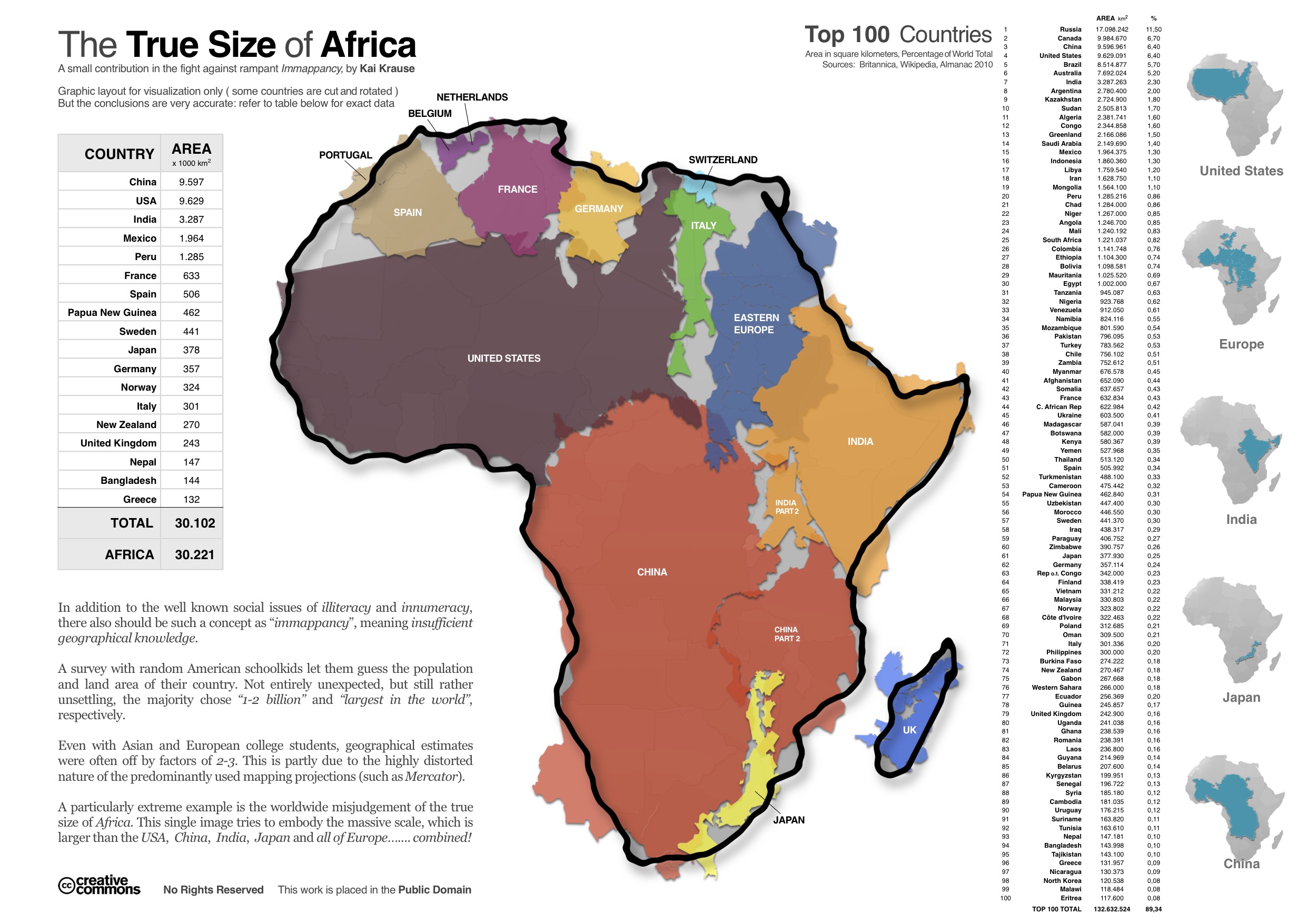On Wednesday, January 25th I attended the Learning Technologies exhibit at Olympia in London. I used agreeadate to schedule as many meetings with corporate learning luminaries as possible. Next to catching up, I decided to ask each of them the following four questions:
- What will be the most exciting (professional) thing you are planning to do in 2012?
- Which corporate learning trend will “break through” this year?
- Which company (other than your own) is doing interesting things in the learning space?
- What was the best book you have read in 2011?
So here goes, in the same order as during the day:
Steve Dineen
Steve is the Chief Executive at Fusion Universal. We mainly talked about Fuse their video-centric social platform. In the next few weeks they will swap out the current video player and will replace it with one that makes it easier to display subtitles and transcripts, will do bandwidth detection and will allow for much better reporting on how the video has been viewed. They will also roll out adaptive testing with adaptive learning journeys. See here for example:
[youtube=http://www.youtube.com/watch?v=0Ge9oDc5I0k]
His answers to my four questions were as follows:
- The implementation of pull learning, seeing learning as a journey rather than a process and then the provision of the environment to let personal learning happen (as a platform and an environment). Another exciting thing is the Virtual School, they should be going live with a full secondary school curriculum by September.
- People will start to understand that not all learning needs to be centered around a course. This is a big paradigm shift for which we are now seeing the pioneers emerging.
- Fusion is not necessarily taking inspiration from the learning technology community. Instead, they are taking inspiration from YouTube. It is incredible to see what they have done to their platform. On design matters they take inspiration from Apple.
- The four books he enjoyed in the last few months were The Presentation Secrets of Steve Jobs and Presentation Zen, Good to Great and The Innovators Dilemma.
Barry Sampson
Barry is one of the three partners in Onlignment, a learning consultancy with broad capability. He is also responsible for changing my life by properly introducing me to Markdown, the greatest thing since sliced bread for people who have to do a lot of writing of any kind. They have put a lot of effort into truly blending their own offerings. Rather than just teach a course on learning design for a few days they now design a journey towards independence. For one client they do a workshop first and then one-on-one coaching sessions (virtual and face to face). The end result will include e-learning content created by the participants themselves and guided by Onlignment.

His answers to my four questions were as follows:
- Making the circles live. The circles make it very clear what Onlignment is offering and from now on we will only do work on things that fit with these circles.
- What we will see is a lot of mobile learning done badly (“everyone will screw up mobile this year”). Everybody will deliver e-learning content on mobile technology. It is usually crap on a PC and will be worse on mobile. He has also seen more Moodle vendors than ever before at this exhibit, so Moodle seems to be breaking through too.
- Two companies that are doing interesting things are Aardpress and Coloni. The former has a Software as a Service (SaaS) version of Moodle and the latter has a great licencing model: you pay on the basis of the space you take on their servers (their roots are a website development company) and they are very actively engaged with their clients.
- The only book that Barry has read in the last year is a book about becoming a dad.
Lawrence O’Connor
Lawrence was the only person who was excused from my four questions. Instead we had a discussion around topics like mindmapping, authenticity, tools for conviviality (and the speed of transportation), theatre and doing what you love. We spotted Jaron Lanier who has written the thought provoking You are Not a Gadget, but were too late to invite him over to join our lunch.
Amir Elion
Amir works for Kineo Israel an e-learning development company and has written 100 Presentation Ideas which is now also available as an iPhone app. I have had many virtual meetings with Amir over the last two years (he participated in the Learning in 3D reading group for example, but this was the first time we got together in real life.
His answers to my four questions were as follows:
- The first thing that he is looking forward to is to try and see if mobile learning can be made into something real. It has a lot of potential and is a new way of supporting performance. There are still many questions around it that need to be answered. There is a lot of technical work to do, but more importantly the learning models and the performance support models will need to be rebuild. Kineo is doing pilots with a few clients. The second thing he is excited about is advancing blending learning through using a learning typology. He has started drawing a table explaining which type of solutions solve particular challenges.
- He hopes the break-through trend will be the open source Learning Management System (LMS) and would prefer that to be Totara. In Israel that is very likely to happen. Many companies there do not have an easy way to track learning now and the fear for open source has subsided. Companies now actually see the advantages of open source: flexibility, lower costs and supplier independence (“there is always another Totara partner”).
- The companies that are creating the development tools are really moving forward quickly. Articulate Storyline is exciting in how it really supports non-linear learning and now can also work in Hebrew and other right-to-left language. The latest version of Adobe Captivate is also good. These companies really work with the e-learning development companies to incorporate e-learning best practices into their tools. Other than that it is mostly individuals that he learns from. Donald Clark, Cathy Moore with her Action Mapping, Cammy Bean (from Kineo US) or David Kelley.
- The book he liked was Drive. The concepts of autonomy, mastery and purpose can directly be applied in corporate learning.
Kineo has a tradition of producing very useful promotional booklets. They gave me a copy of the very sensible Designing Mobile Learning (available on the Free Thinking area of their website) . It has ten tips on designing mobile learning:
- Always ask “Why make this mobile?”
- Use those off the shelf information and communication apps NOW
- Bring the informal into the blend
- Make sure it’s more than e-learning on a tablet
- Make it tactile
- You’re in their personal space; you’d better make it worth their while
- Make the limited space count
- Consider developing templates for efficient design
- Extend the impact of your media assets
- Find the right place to use mobile learning in your new-look blends
and 10 examples of where mlearning can make a difference:
- Make it easy to review the latest news and information
- Scan it, learn about it
- Just-in-time guides
- Performance support and checklists
- You know where I am, help me!
- Refresher learning
- Push reminders
- ‘Mobile company uses mobile learning’ shocker… Use the medium they use
- The LMS on the go
- Talk to me, interactively
David Perring
David is director of research the UK-based and EMEA focused educational technology analysts Elearnity. Elearnity has been working hard at writing vendor perspectives. The summaries will be available for free and the in-depth reports are available for a fee.
His answers to my four questions were as follows:
- The most interesting and exciting thing for him is always working with clients who have interesting challenges. It is fascinating to work for people who have different perspectives but also bring intelligence into the process. For him it is the “freshness of working with 10 organizations rather than with one”.
- He is not sure that there will be any more break throughs in the next year. Certain organizations might have find some “inspirational moments”, a lightbulb going on. Maybe some sales forces will start using mobile technology for its real potential, rather than having people use mobile technology in the classroom. He thinks the economic pressures will mean that there might be a lot more technology assisted learning and less face to face training in the years ahead.
- He doesn’t believe you will find companies doing interesting things, you will always find people doing interesting things. It is very difficult to find people in organizations who are willing to share the interesting things they are doing: the catalysts for change, the mavens who help organisations reach tipping points.
- The book he really enjoyed reading last year was Spike Milligan’s Adolf Hitler, My Part in his Downfall. Milligan is a comic genius.
We also discussed how great it would be to create more pencasts, using the Livescribe to sketch out and explain concepts. This is something that is still on my list to try out properly.
Rob Hubbard
Rob runs his own company LearningAge Solutions and is the chair of the E-learning Network (ELN). The ELN was present at Learning Technologies and was campaigning hard for effective elearning through “The Campaign for Effective Elearning” (also see: #c4ee on Twitter. He is very worried that people will start to think that all e-learning is cheap and crap. This would be bad for the industry (I see this kind of reaction in my company already). The ELN will therefore start highlighting things that really make a difference. Rob will be a busy man in 2012 because there is a publishing deal with Wiley Pfeiffer for a book from the ELN and with LearningAge he has created a piece of web based technology that implements the concept of “goal-based learning”, which is all about solving the transfer problem and putting learning into practice.
His answers to my four questions were as follows:
- He hopes that he will be able to do a very big project which uses games and simulations to train thousands of people up to a certain skill level. Another exciting thing is his Rapid E-Learning Design course (I met Rob as a pilot participant of this truly excellent course) which he will be offering for free for the first time this year. Why free? Because it is a great way to meet new people.
- Something that really seems to be gathering pace is the concept of gamification. People are starting to take it more seriously and the market is picking up on that, there even was one stand that advertised with “gamify your learning”. He likes how it aligns with the way our brain works: we have always learned through experimenting and getting awards for behaviour that works.
- HT2 is doing interesting stuff, but in general he would consider science fiction to be more inspiring than what other companies are doing. One thing he showed me as an inspiration was an an interactive storybook on the iPad titled The Fantastic Flying Books of Mr. Morris Lessmore made by Moonbot studios. It is incredible interactive and it teaches children how to play a song on the piano or how to write with the letters in a cereal bowl.[vimeo http://vimeo.com/35404908]
- He is really enjoying The Diamond Age by Neal Stephenson which at some level is basically a book about e-learning and performance support.
Laura Overton
Laura is the Managing Director of Towards Maturity an organization that helps companies get the most out of their learning technology. She was incredibly busy at the conference trying to connect “upstairs” (where the conference is) to “downstairs” (where the salespeople are exhibiting) through organising exchanges between speakers at the conference and attendees at the exhibit.
Her answers to my four questions were as follows:
- One of the things Towards Maturity is looking at in 2012 is how to use all the data they have for practical change and to stimulate thinking. They will start doing some sector views. Next week they are launching a series of in-focus reports on particular issues that they know are holding the industry back. One of them is the cycle of indifference to change. One research report will be focused on business leaders asking them to demand more and be less satisfied. She hopes this will stimulate some new dialog between business and learning. She would not consider herself a technologist, instead she wants people to act: it does not matter what technology they use as long as they get better results.
- A lot of people expect social learning to break through. She doesn’t think that will happen this year, especially the use of external social media (i.e. Facebook) will not work. Mobile learning is really on the verge of break through. User-generated content and an openness to that is an interesting thing too. They have seen quite a bit of growth in that.
- She naturally has something good to say about all the Towards Maturity ambassadors. She likes the e-learning vendors that are really looking at the business issue. They come up with business solutions rather than with elearning modules. Things like natural assessment, storytelling, experiential learning. Concepts rather than the technology.
- She thought Nudge, a book about influencing and persuasion, was great.
Ben Betts
Ben has his own company H2T and inhabits the edge between academic research and innovative education technology practice.
His answers to my four questions were as follows:
- He is the most excited about Mozilla’s Open Badges project. He hopes it can help bridge the gap between Open Educational Resources and traditional formal accreditation. Anybody or any organisation can become a badge prodider (it will be one of my goals to start handing out Hans de Zwart-related badges before the end of the year), so he could already see something similar happening as in LinkedIn, “I recommend you and you recommend me”. I could see how you might get a meta-badge ecosystem with accreditors accrediting accreditors (Where would the buck stop? At Stephen Downes?). In 2012 he will also finish his doctorate thesis which is currently titled “Improving Participation in Collaborative Learning Environments” (I hope he doesn’t follow Dougiamas’ footsteps on this one).
- There was one word that he thought would be the word to watch for 2012. Unfortunately he could recollect it and then had to go for “Curation” (which he think is probably last year’s word).
- He quite likes what Epic is doing with Gomo, although they still have some way to go. Another great company is of couse Mozilla. He wasn’t particularly overwhelmed by Apple’s iBook announcement.
- The most interesting book for him was probably the biography of Steve Jobs. He is currently reading Kahneman’s Thinking, Fast and Slow. Also good was A Theory of Fun for Game Design which shows that having learned something is the definition of fun in a game. Another great book was Business Model Generation (I just read that too). Finally he would like to recommend Resonate by Nancy Duarte, which is basically “stuff you already know put really complicated” (mostly about telling stories), but it the best example he knows of how a book should be layed out.
Concluding
I didn’t have a lot of time to spend at the exhibit, but did do a very quick walkaround and found companies I just want to highlight:
- Toolwire is going to evolve what they call Learnscapes into gamescapes, using their normal interface and turning it into a realtime multiplayer event.
- I have never written about Lynda on this blog before. They provide videos teaching people how to do things with software applications (think about teaching you a particular effect in Photoshop for example). You can pay per video or get a subscription. They are hugely successful. I consider them another example of a thing that “geeks” have managed to get right, without the rest of the world noticing. Why aren’t they an enlightened example in the corporate learning world? Related to this I will create a theme for myself this year: Open source communities have been the first to find solutions for certain problems (collaboration at scale for example). What can businesses learn from this?
It was a great privilege to be able to speak to these eight people in a single day (I could have talked for hours with each and everyone of them…) and it takes an event like Learning Technologies to bring these people together. I will have to find a good reason to go again next year. Maybe a speaking engagement?








